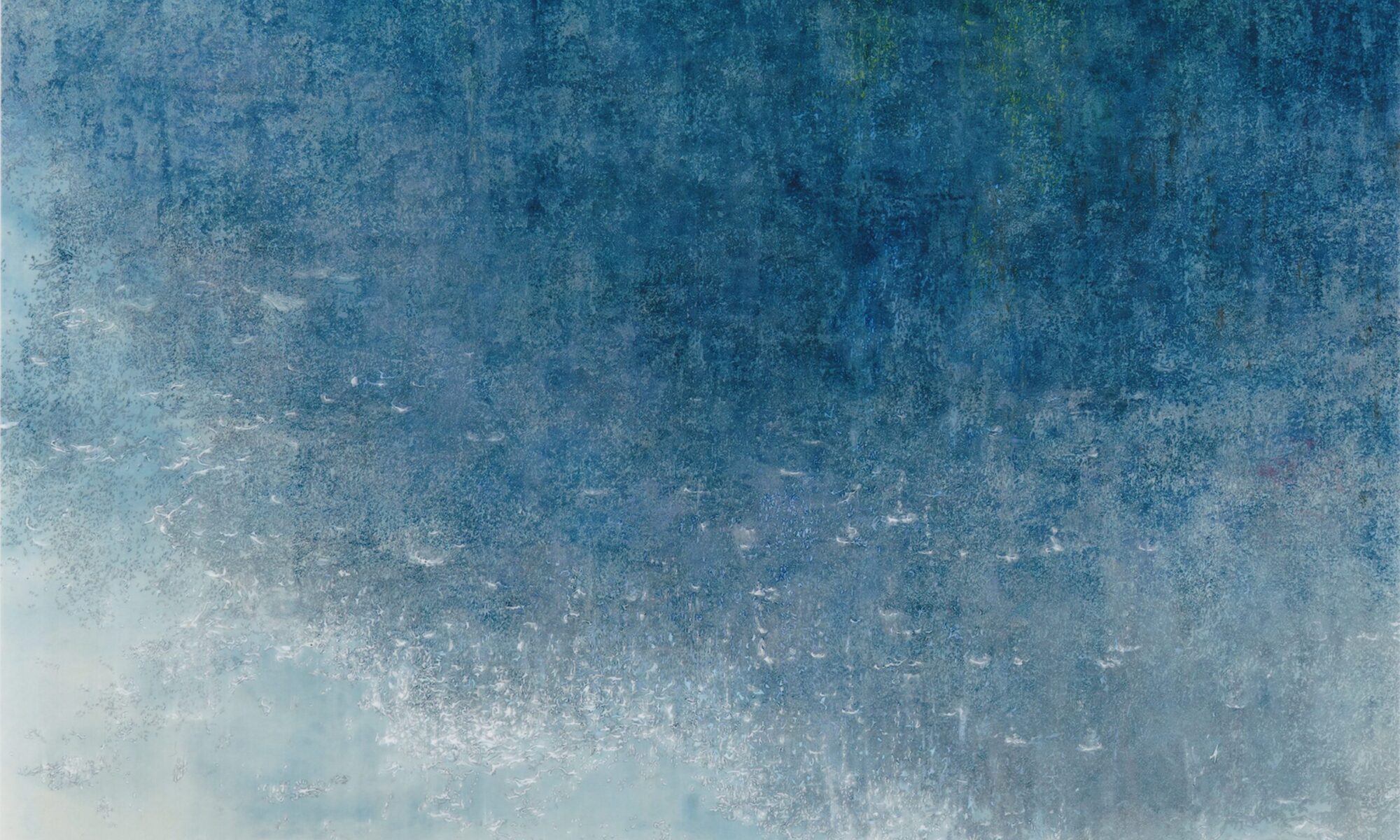
仮想空間で人間の感覚さえも再現されつつある現在。
京都で日本画を学ぶ私は「匂いまで描け」と言った栖鳳の教えと未だに向き合っています。
京都を代表する日本画家 竹内栖鳳(せいほう) (1864-1942)は、その優れた表現力によって動物を描けば「匂いまで描く」と称賛されました。しかし、この謂れは栖鳳自身が弟子たちに「匂いまで描け」と指導したことにも由来します。西洋文化が日本に入ってきた明治時代。栖鳳は京都画壇を担う若者を、職人ではなく芸術家として育成しようとしました。師匠や流派の絵を写すこれまでの練習方法よりも、自身の感性で絵を作ることを推奨したのです。写生の現場にある温度や匂い、音などを自分の感覚で感じ取り、それを表現させることで近代日本画に作家の個性を吹き込みました。近代京都画壇に、小野竹喬・福田平八郎・堂本印象・徳岡神泉など、個性的な画家が多く輩出されたのは、彼の教育の成果と言えるでしょう。
…しかし、それにはまだ続きがあると私は思うのです。
栖鳳の遠い弟子であり、個性溢れる現代に生きる私が日本画で表現したいのは、多くの個性があってこそ見えてくる普遍性(すべてのものに通じる性質)です。栖鳳は感覚を表現する過程(感覚→表現)で絵画に個性が生まれることを証明しました。私はその表現に、さらに感覚を加える(感覚→表現→感覚)ことで普遍性を捕まえようとしています。それはまるで青磁が酸化焼成を経て、還元焼成によって初めてその色を示したように。私は日本画の表現には、まだ先の可能性があると感じています。
私の作品に見られる紙を鉄筆で掘る行為は、触覚を通じて表現に感覚を加えるために必要な作業です。その僅かな凹凸は絵を見る人の認識に揺らぎを与え、鑑賞者は私の表現を自身の感覚に問い直すことになるでしょう。
青磁は酸素不足で焼かれることで、自身に含まれている酸素を放出し、その色味を変化させます。私の作品も同じです。鑑賞者が自身の感覚を放出することで初めて、作品に普遍性が宿ります。私の仕事は限りなくその仕掛けに献身することです。
人間の感覚までも仮想空間で画一的に再現しようとする現在。私は、同じになることが未来への解決策ではないと感じています。違うからこそ自分を、世界を、問い直すことができるのではないでしょうか。個人の感覚から普遍性を追求する私の作品は「匂いまで描け」と言った栖鳳先生への私なりの解答であり、未来への提案です。
どうか作品の前に立ち、私の試みにご協力ください。
Today, even the human senses are being reproduced in virtual space.
Having studied Japanese-style painting in Kyoto, I am still confronted with Seiho’s teaching, “Draw even the smell.
Seiho Takeuchi (1864-1942), one of the most famous Japanese painters in Kyoto, was highly praised for his outstanding expressiveness, saying, “It looks as if he even painted the smell. However, this phrase comes from Seiho himself, who instructed his pupils to “paint even the smell of animals. During the Meiji period (1868-1912), Western culture entered Japan. Seiho sought to nurture the young people who would lead the Kyoto art world not as craftsmen but as artists. He encouraged them to paint pictures based on their own sensibilities, rather than the traditional method of imitating the paintings of masters and schools. And by allowing young painters to express the temperature, smells, and sounds of the scenes they sketched with their own senses, he infused modern Japanese painting with the individuality of the artist. It was his education that produced such unique painters as Chikkyo Ono, Heihachiro Fukuda, Insho Domoto, and Shinsen Tokuoka in the modern Kyoto art world.
However, I believe it still has a way to evolve.
As a distant disciple of Seiho and living in a modern age overflowing with individuality, what I want to express in Japanese painting is the universality (the quality common to all things) that comes into view after individuality is expressed. Seiho proved that individuality is created in painting through the process of expressing the senses. I believe that by adding more sensation to that expression, a universality that transcends individuality is created. It is like celadon porcelain that undergoes oxidative firing and then shows its color for the first time in reduction firing. I am attracted to the possibilities that lie beyond that.
The act of digging into the paper with an iron brush, as seen in my work, is a necessary process to add sensation to the expression through the sense of touch. The slight irregularity of the surface shakes the viewer’s perception and makes him or her question my expression to his or her own senses.
When celadon is fired by incomplete combustion, the oxygen contained in itself is released and the color changes. The same is true of my work. Only when the viewer releases his or her own senses does the work have universality. My works are infinitely particular about that trick.
It is also my way of asking a question to the future that seeks to uniformly reproduce the human senses in a virtual space.
Please stand in front of my work and support my attempt.


